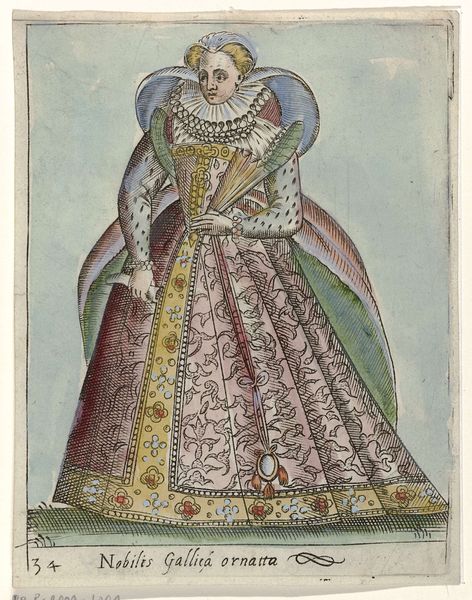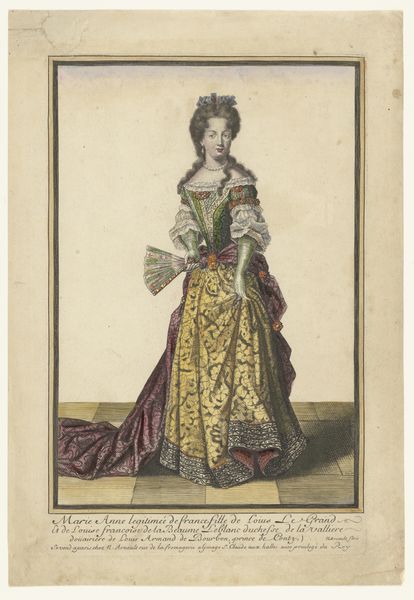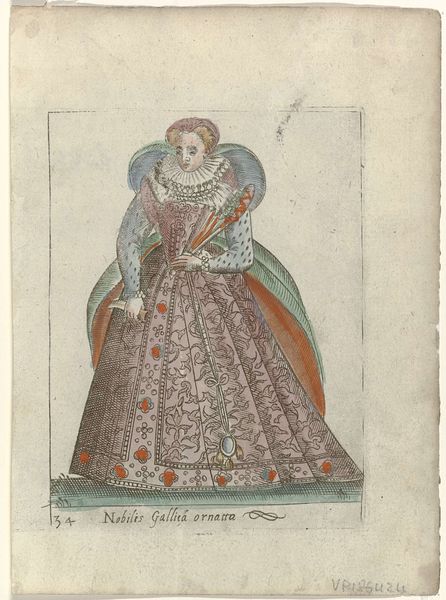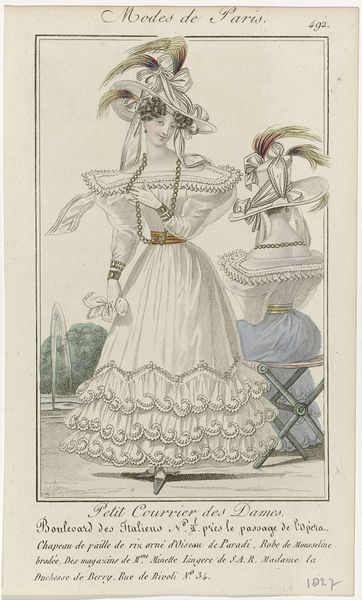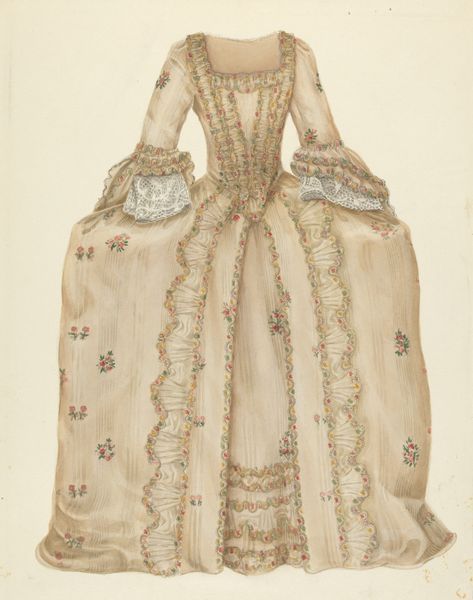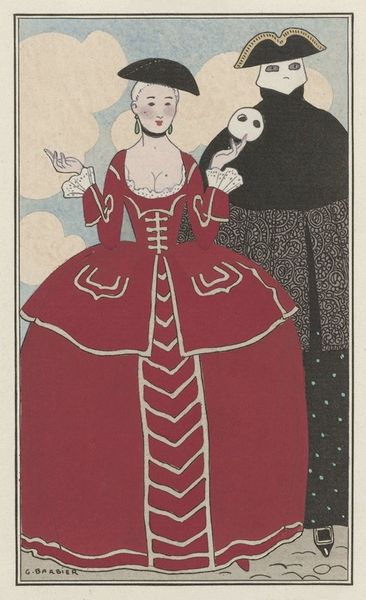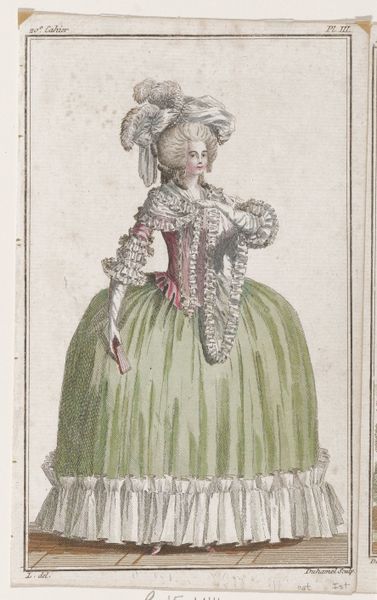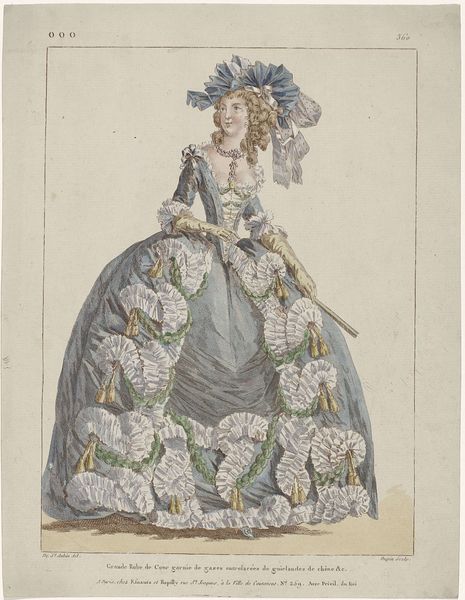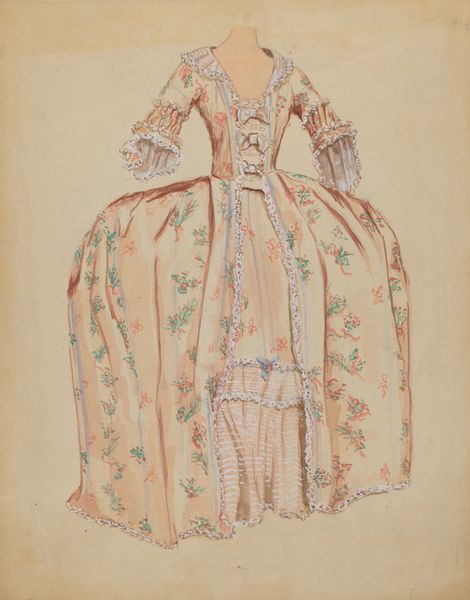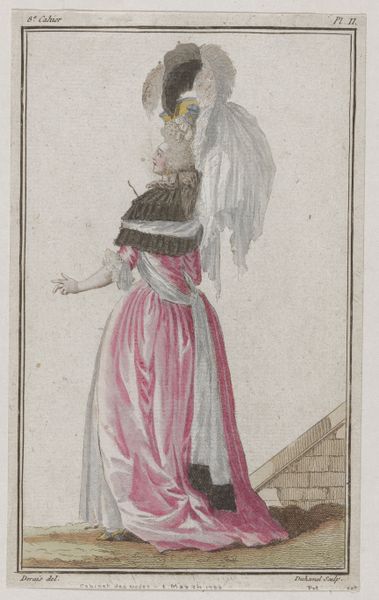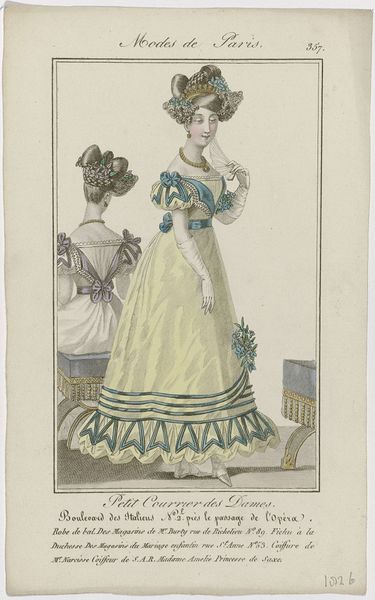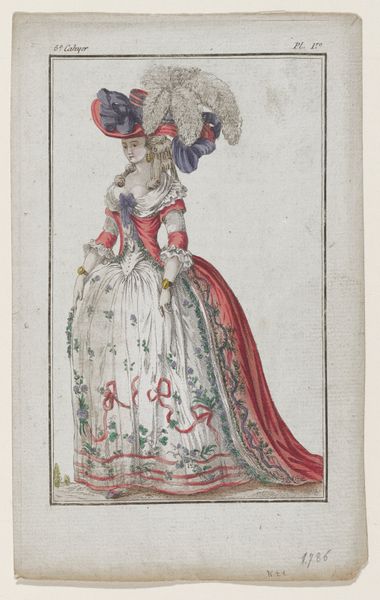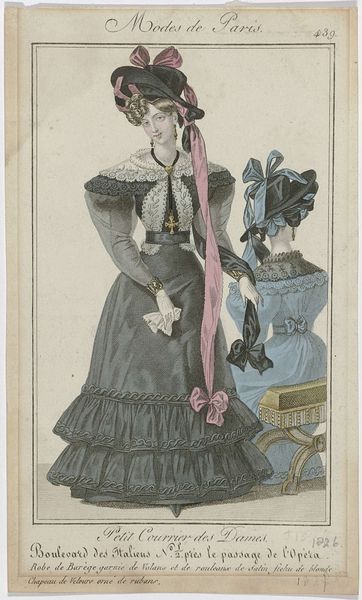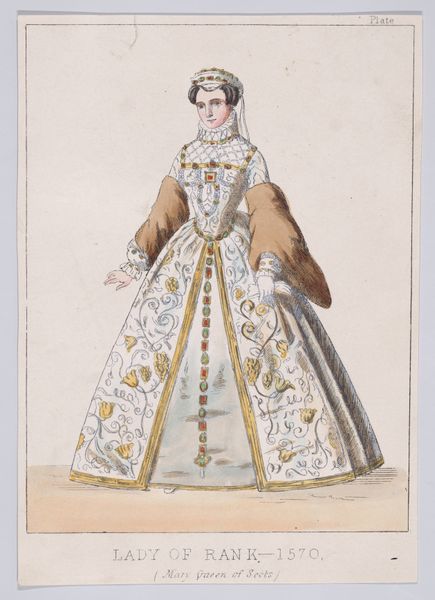
drawing, watercolor
#
portrait
#
art-deco
#
drawing
#
toned paper
#
pastel soft colours
#
muted colour palette
#
figuration
#
watercolor
#
historical fashion
#
watercolour illustration
Copyright: Public Domain: Artvee
Editor: Here we have "La rose de l’infante; Costume, de Worth," a watercolor and drawing by George Barbier from 1924. It feels very poised, almost theatrical. What draws your eye when you look at it? Curator: I’m struck by how Barbier uses classical motifs to create a very modern image. We have the statues in the background, clearly evoking antiquity, but the overall effect is pure Art Deco. Note how those visual symbols create tension between the past and present, memory and modernity. Do you see how the rose itself becomes a poignant symbol in this context? Editor: That’s a really interesting point! The rose… it’s offered, almost tentatively. And you’re right, the juxtaposition of classical statues and the Art Deco styling does create a unique tension. Curator: Exactly! And think about the costume itself – a Worth design, referencing historical fashion, but interpreted through a 1920s lens. It's like a visual echo chamber. Does it suggest anything about cultural memory, perhaps a longing for a romanticized past? Editor: Perhaps a reclaiming of the past through modern eyes? It definitely doesn't feel like a simple homage. More like a conversation between eras. Curator: A conversation! Yes. And one that is both elegant and a bit melancholic, don't you think? This melancholic sentiment almost always prevails when memory surfaces. Editor: Definitely melancholic! I hadn't quite put my finger on it before, but seeing it as a conversation, a cultural memory, makes it so much richer. Curator: Precisely, that's the beauty of symbolism! It offers us layers of interpretation and invites us to actively participate in the dialogue across time.
Comments
No comments
Be the first to comment and join the conversation on the ultimate creative platform.
